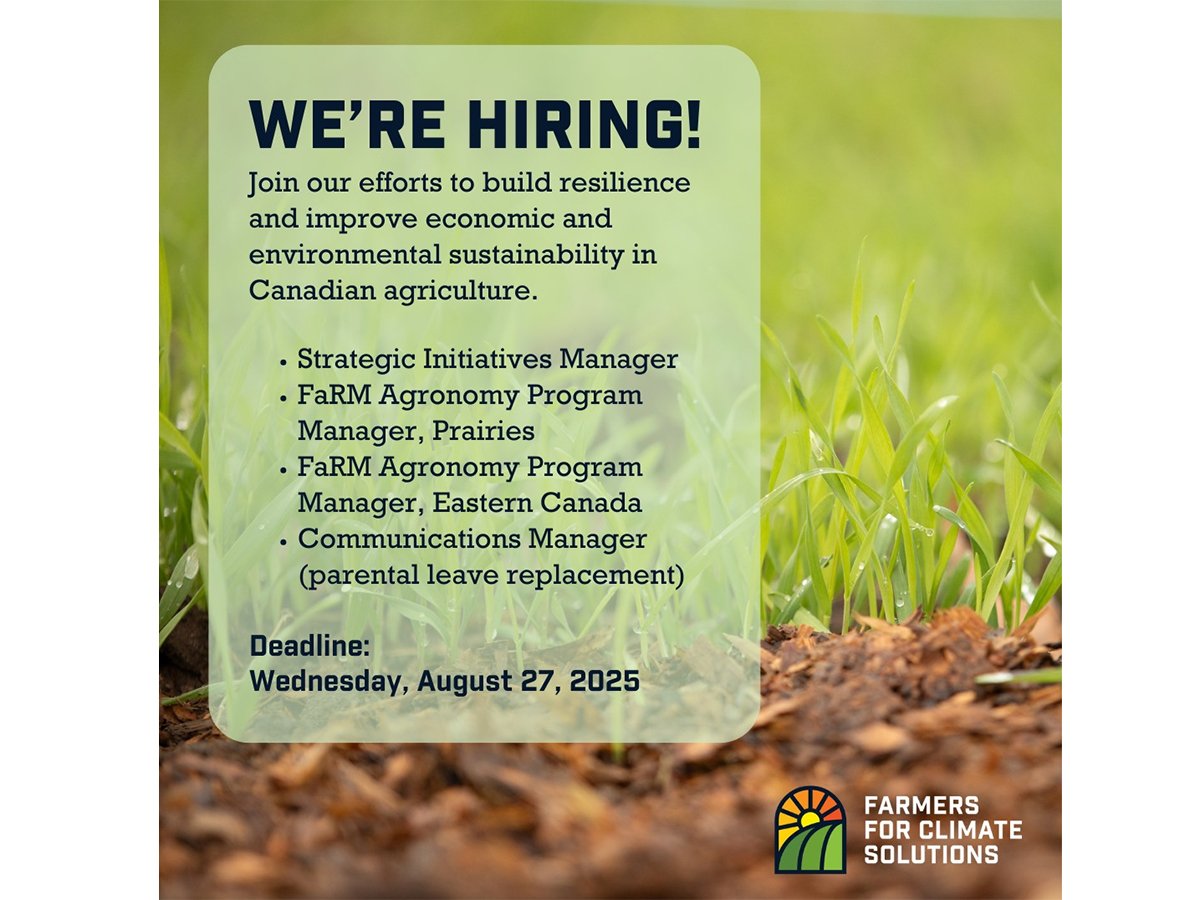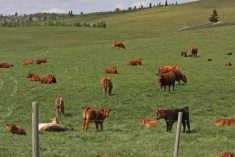Banks appear to be making strides in helping new entrants gain access to financing, but it has been a slow process that has caused frustration among some producers.
Steele Perrett is one of those farmers. The Alberta producer recently raised various concerns that young farmers like him face when needing loans, pointing out it’s generally more difficult if farmers don’t have lots of equity.
“As we enter year five of declared agricultural disasters in our farming area (Yellowhead and Lac Ste. Anne counties), a farm like mine, which is not based on equity and living off the inflation of land, but instead on profitability, is screwed,” Perrett wrote in a recent op-ed in The Western Producer.
Read Also

Environmental farm group has Ottawa’s attention
In 2021, Farmers for Climate Solutions published a report on how Canada should reduce emissions from agriculture. Not long after, the federal government implemented most of the recommendations in the report.
He said his business plan is renting land from older farmers who don’t have someone to take it over. They rent everything and it works for them, he said, adding that he has managed to expand his operation without outside financing.
But in a year like 2019, in which his operation suffered losses, he said the farm was unable to borrow money.
“Despite being able to prove massive profitability in the past, we have no ability to borrow money to cover even a single year of losses,” he wrote.
“Banks, FCC and the AFSC will lend money only on land equity, which we do not have.”
Perrett’s situation speaks to the challenges new entrants, particularly young ones, face when they need financing to grow and sustain their businesses.
Financial experts agree.
While they say every farmer’s financial situation is unique, it will likely be more difficult for new entrants to access financing without many assets or capital.
Despite these challenges, there are ways new entrants can prove themselves to receive a loan.
Andre Fagnou, director of pricing and product at Farm Credit Canada, said having past work experience and education credentials can be helpful.
The big hurdle, however, will be what the new entrant plans on bringing to the table financially, he said, including cash and assets.
“When you’re starting from scratch, it’s tougher to get a leg up,” Fagnou said.
“If they don’t have land, they have to really have a good track record, showing their operation has been profitable and has good repayment capacity.”
Farmers should generally have an easier time getting a loan once they have proved themselves financially.
The kicker, however, is that it may take years for the bank to feel confident in lending money. In Perrett’s case, he said it took him nine years of showing proven income and growth to be approved for a line of credit.
Jason Turner, a manager with lending and AgriStabilty products at the Agriculture Financial Services Corporation in Alberta, said when the crown corporation is asked to lend money, it looks at the management of the operation, the operator and the securities he can offer.
“We typically lend against some type of fixed asset,” he said.
“That can be land, buildings, equipment and quota. There are a number of assets we lend against. It doesn’t have to be land.”
However, it doesn’t help that land prices have increased over the last few years.
Turner said land prices are one of the biggest barriers for new entrants.
He said more money is needed to obtain a mortgage as prices increase. That means less cash for things like equipment and inputs.
Input prices have also trended higher, he added. Squaring these factors with fluctuating commodity prices can sometimes make farming more risky.
“One side of the equation is the financing required for the assets needed to operate in the industry, and the second side would be having good business risk management tools, like crop insurance and AgriStability, to help mitigate that risk,” Turner said.
Perrett’s challenges aren’t unique.
Turner said it can be common for new entrants to struggle to get a loan, but it will depend on their business model.
“There are pros and cons to any business model,” he said.
“Someone might be able to build their operation more quickly in a model where land is rented. On the flip side, it might be more difficult to borrow money in that scenario.”
Despite these hurdles, lending institutions are becoming more accommodating to new entrants.
FCC and AFSC have programs geared toward young farmers.
FCC has a starter loan and a young farmer loan that can help new entrants get their foot in the door. It also provides educational material and online management software and hosts young farmer conferences where connections can be made.
AFSC recently changed its mandate and now aims to prioritize young entrants. It offers an array of programs that might help new farmers get their foot in the door.
Perrett wrote he is appreciative of the programs, but he said more needs to be done.
He suggested the agriculture industry needs to innovate the financial system, writing that farms remain too focused on farming for equity rather than farming for profit.
“It (the ag industry) simply cannot attract a new generation unless they inherit land,” Perrett said.
Fagnou acknowledged these concerns.
He agreed that some people in the older generation have farmed with equity in mind. Their retirements might be tied up in their cattle herd and land, for example, rather than in typical RRSPs.
“Some might be OK if they break even in a year, given their land values may have gone up and their cow herd didn’t go down,” he said.
“Whether they are doing it to manage taxes or whatever the case may be, they were content with equity.”
However, banks will always be attracted to those who maximize their profits, he added. It’s less attractive when profits are minimized for an increase in equity.
Fagnou sees the industry changing. He pointed to numerous innovative business models that have managed to turn good profits.
Examples include:
- Vertical farms, in which a farmer might not have an acre of land but manages to grow more food on a per-acre basis.
- Direct-market farms that receive premiums from restaurants or consumers.
- Unique rental agreements, where a farmer seeds and harvests one particular crop for various owners.
He said the challenge for financial organizations such as FCC is that they tend to be slow to finance trailblazers.
“We can be a little slow as an industry, but I think that’s on us to move a little faster,” Fagnou said.
“We need to see how things roll out when new products are released, but it’s all an opportunity.”
















